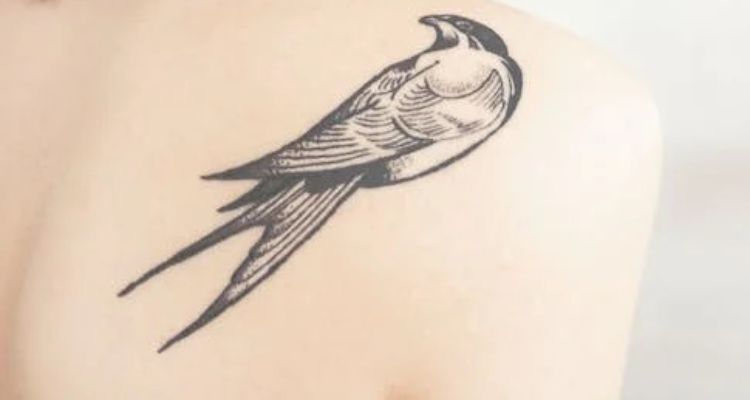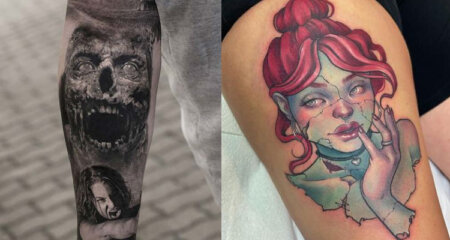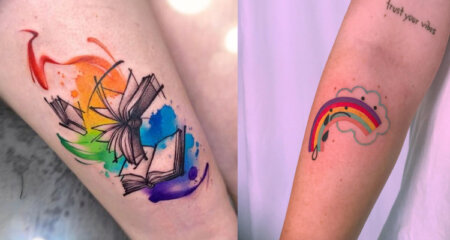
How to Draw Your Perfect Tattoo Design with Inspiration
Posted on
Embarking on the journey to get a tattoo can be thrilling yet daunting. It’s an artistic expression permanently etched on your body, so choosing the right design is crucial. Learn how to design a tattoo with precision and creativity to ensure your ink reflects your unique style.
How to Design a Tattoo
Understanding Tattoo Styles
Firstly, understand the different tattoo styles available. Some popular styles include portraiture, black and gray, horror, trash polka, and lettering or script tattoos. Each style has its unique characteristics and appeals:
- Portraiture: Ideal for memorializing people or depicting iconic figures. It requires a skilled artist to capture a true likeness.
- Black and Grey: Known for evocative and sometimes creepy themes, this style uses black ink and water to create shades and contrasts.
- Horror: For those interested in dark or morbid themes, including characters from horror films or creepy imagery.
- Trash Polka: A new style featuring black and red color schemes, combining realism, lettering, and abstract shapes.
- Lettering or Script: Ranges from simple word tattoos to highly stylized pieces, where words become part of an artistic expression.
Finding Your Ink-spiration
Finding the perfect inspiration for your tattoo is a deeply personal journey, one that should resonate with your interests, experiences, and aesthetics. Here’s how to dive into this creative process:
1. Reflect on Your Interests and Passions
Tattoos are a fantastic way to express your hobbies or things you’re passionate about. They can be symbols representing aspects of your life that hold great importance.
For example, a musician might consider a tattoo of a favorite instrument, while an avid traveler could opt for a design that represents their love for exploration.
2. Memorializing Special Experiences
Tattoos can serve as permanent reminders of significant events or experiences in your life. A landmark from a memorable trip, a symbol commemorating a significant achievement, or an artwork that reminds you of a particular time in your life, these designs can be a way to keep those memories close.
3. Aesthetic Appeal
Sometimes, the inspiration for a tattoo comes purely from a design you find beautiful or intriguing. It doesn’t always have to be deep or meaningful; it could simply be a pattern, shape, or color palette that you find visually pleasing.
4. First Tattoo Considerations
For those getting their first tattoo, it’s often recommended to start small and choose less painful locations, such as the forearm, outer shoulder, or upper back. These areas not only offer less discomfort but are also great for showcasing smaller, simpler designs.
5. Personalized Designs
Personalized tattoos, such as those representing your birth month flower or zodiac sign, can add a unique and meaningful touch.
Each birth month has a specific flower associated with it, making for a deeply personal and symbolic tattoo. Similarly, zodiac signs can reflect your personality traits and are a popular choice for those who feel a strong connection to their astrological symbol.
6. Seeking Professional Guidance
Once you have a rough idea, consulting with a professional tattoo artist can help refine your concept. They can offer insights on how to translate your ideas into a stunning design that works well with the contours of your body and your skin tone.
For more creative guidance in choosing what to draw or tattoo, consider taking the What Should I Draw? quiz on Brainfall. This can be a fun and insightful way to explore different ideas and inspirations.
Your tattoo is a piece of art that represents a part of your story, so make sure it’s something you’ll be proud to wear for years to come.
Size, Placement, and Body Real Estate
The size and placement of your tattoo are as important as the design itself. The size of the tattoo influences the level of detail that can be included and determines the suitable locations on the body.
Larger designs are more suited for expansive areas like the back or thigh, allowing for more intricate work. Smaller tattoos, however, offer flexibility in placement and can be inked on areas like the wrist, ankle, or behind the ear.
Consider the visibility and personal significance of the tattoo placement. Do you want it to be prominently displayed or more discreet?
Some areas of the body are more sensitive to pain than others. Areas with more flesh, like the thigh or upper arm, typically cause less discomfort than bony areas like the ankle or ribs.
To Color or Not To Color
The choice between color and black and gray tattoos can significantly affect the overall look of your design.
Black and gray tattoos are known for their classic, timeless appearance and are versatile across various skin tones. These tattoos are excellent for styles that rely heavily on shading and texture, such as realism or portraiture.
Color tattoos, on the other hand, add vibrancy and can bring a different dimension to the artwork.
They are particularly effective in styles like New School, watercolor, or traditional. When considering color, it’s crucial to think about your skin’s undertone as it can influence how the colors appear once healed.
Consulting a Professional

Choosing the right tattoo artist is a critical step in your tattoo journey. It’s advisable to research and visit various tattoo parlors, assess the artists’ portfolios, and find someone whose style aligns with your vision.
Effective communication is key – be clear about what you want while also being open to the artist’s suggestions. A skilled artist can provide valuable input on how best to adapt your design to your body’s contours and skin tone.
Caring for Your Tattoo
Aftercare is crucial for the longevity and appearance of your tattoo. Proper care begins immediately after getting inked, and following your artist’s instructions is vital.
This includes keeping the tattoo clean, applying recommended ointments or moisturizers, and avoiding sun exposure. Over time, tattoos may fade or blur, so touch-ups may be necessary to keep your design looking sharp and vibrant.
Each tattoo is a unique expression of self, and these considerations ensure that your ink not only looks great when you first get it but continues to be a source of pride for years to come.
Wrapping Up
Creating the perfect tattoo design is a blend of personal inspiration, style, and practical considerations. Embrace your creativity, consult professionals, and remember to take your time. A tattoo is not just body art; it’s a personal statement that stays with you forever.
Remember, the journey to finding the perfect tattoo design is personal and unique to each individual. Happy tattooing, and may you find a design that you’ll cherish for a lifetime.







